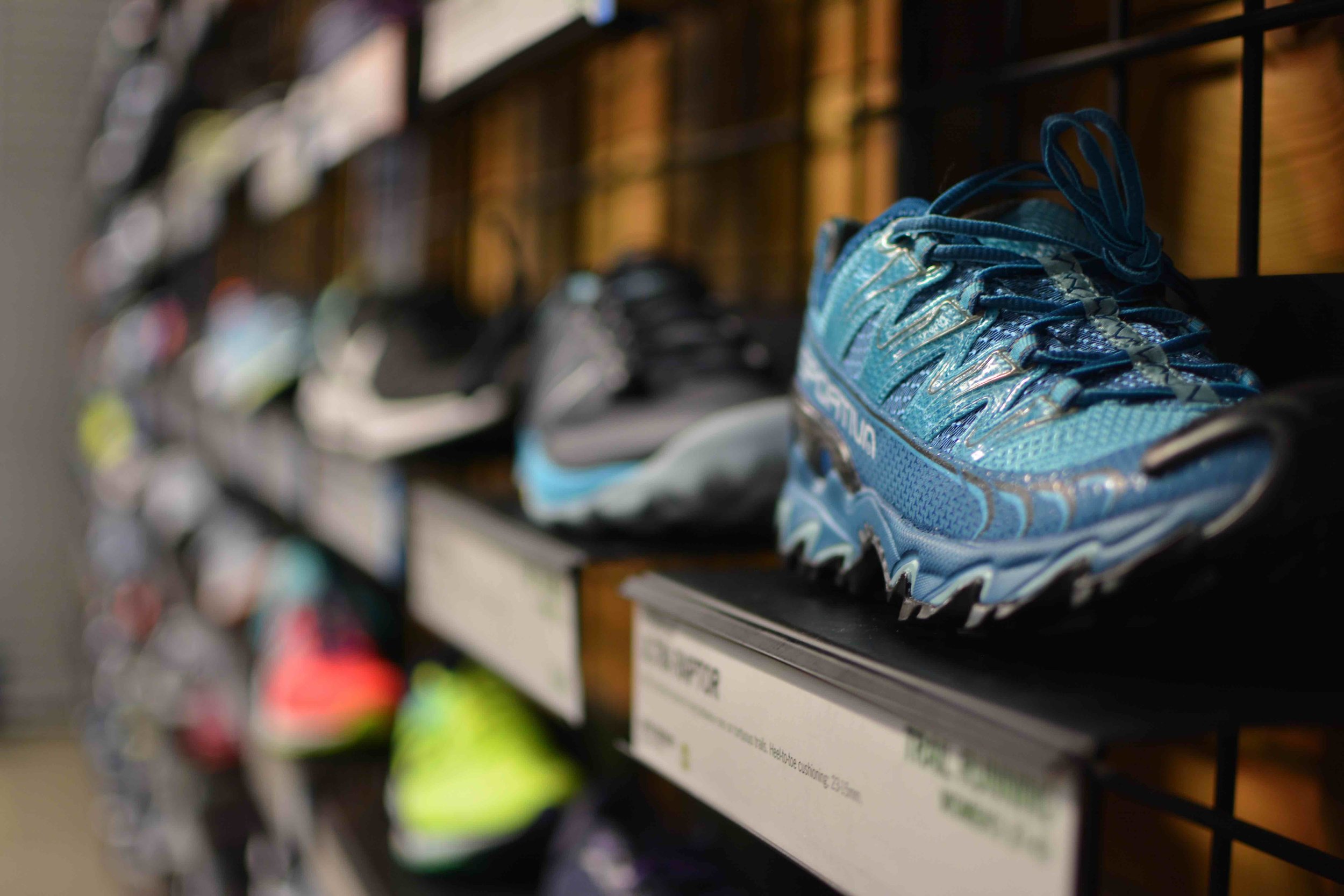Shoe Buying Guide
What To bring
- Orthotics
- Socks for Intended Footwear (i.e. thick socks for hiking boots)
Finding stable shoes can be difficult. A shoe that is both aesthetically pleasing and stable can be tough to find! However, with these tips it'll be much easier to find shoes that match your style and foot!
Getting started
We recommend that you start by finding shoes that you like. For instance, find shoes that are your favourite colour or that have a feature such as Gore-Tex. Once you have found some shoes that you like try taking the insoles out of them. Shoes that have non-removable insoles typically are not designed to fit orthotics. If you've found a pair that do have removable insoles then you can move on to trying a stability test.
Non-removable insoles
Removable insoles
The gifs may take a few moments to load
Stability Test
A stability test consists of four steps and can be executed in about five seconds. Follow the steps below to find out if the shoe you're interested in is stable.
Step 1. With the insole and orthotic out of the shoe hold it in both hands
Step 2. Begin by trying to bend the middle of the shoe in half
Step 3. Next try bending the toe box of the shoe by the big toe
Step 4. Finally, attempt to twist the middle of the shoe
If the shoe folded significantly in steps one and three then that shoe is deemed unstable. If the shoe did not bend in step two then the shoe is far too stiff for daily use. However, if the shoe only bent in the toe box then you've found a stable shoe for daily use!
Step one
Step two
Step three
Step four
The gifs may take a few moments to load
Orthotics
Now you can place your orthotics into the shoes to make sure that they fit. Make sure the heel piece of the orthotic slides into the shoe so that it's flush with the heel pocket of the shoe. If you notice that the top cover of the orthotics is wrinkling you may need a larger size. However, if the top cover feels flush with the interior of the shoe then try it on. Make sure that the shoe doesn't feel too tight across the top of the foot and that any of your toes aren't cramped for space. If the shoe feels tight you may need a larger size or a wider shoe. Keep using the tips until you find a shoe you like!
––––––––––––––––––––––––––––
Shoe Wear
We recommend replacing running shoes used on hard surfaces after approximately seven months. Shoes that have minimal support such as racing running shoes will typically pack out after three months. Although, shoes that are used on softer surfaces like hiking boots will typically last longer (eight months). We're basing our recommendations on how much the average Canadian walks in a day and the average pack out time of a shoe. The average Canadian walks roughly 4000 steps a day, which works out to be about 3.2km.
Tips
- Avoid wearing heels for daily use (one night out won't hurt)
- Avoid wearing minimalist shoes such as flip flops, sandals, and shoes with flexible soles for extended periods of time
- Always ensure that your orthotics are in your shoes








